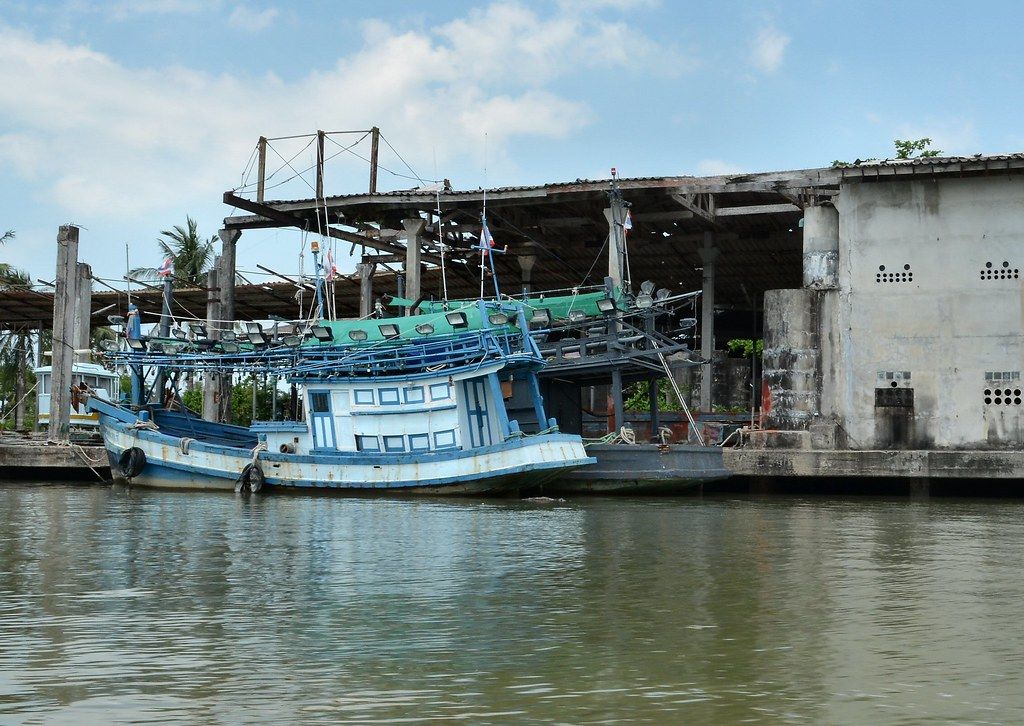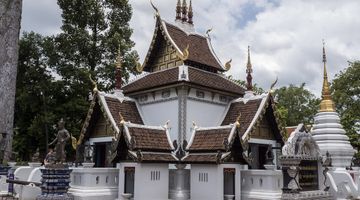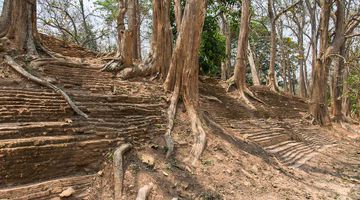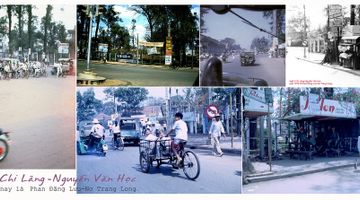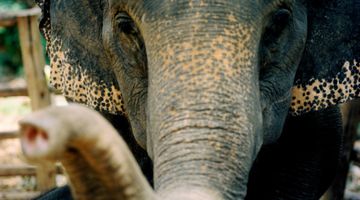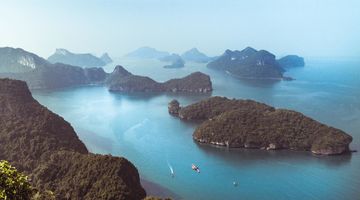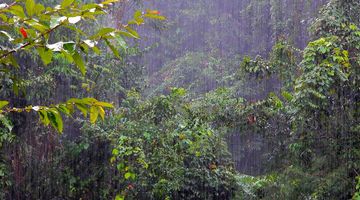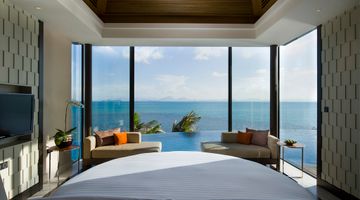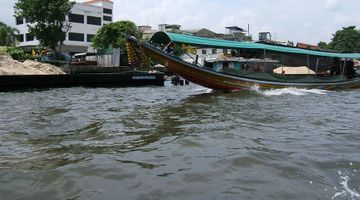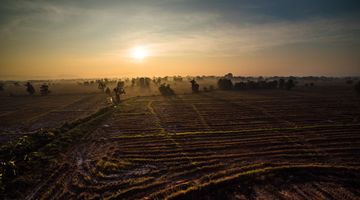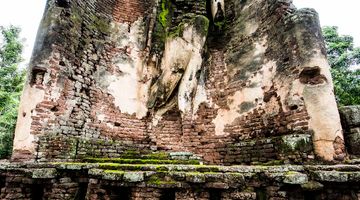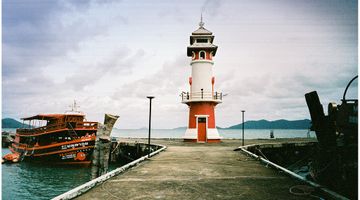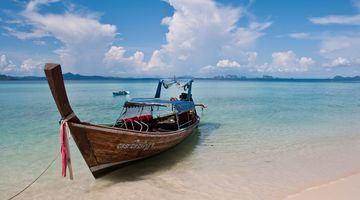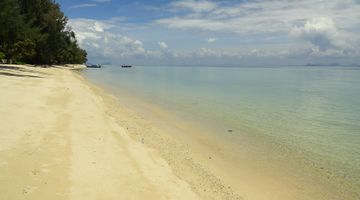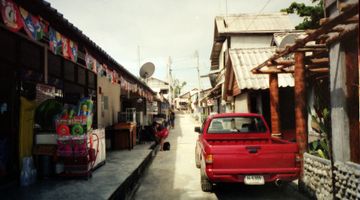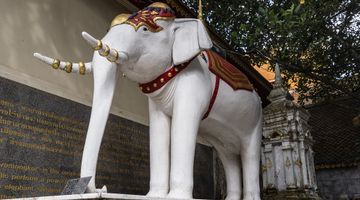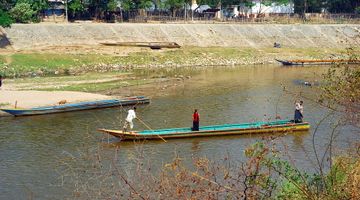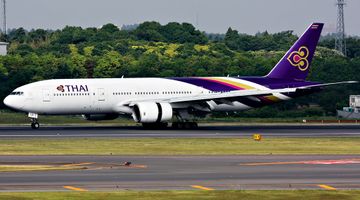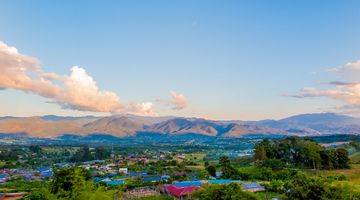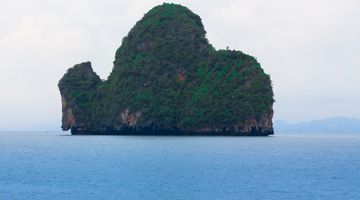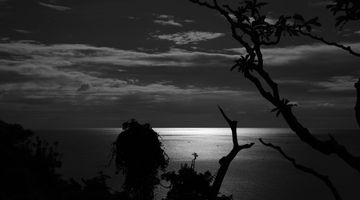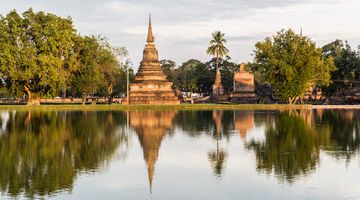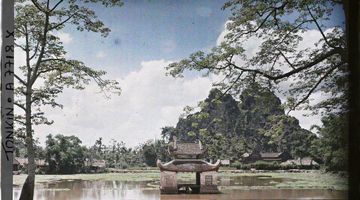Ranong Travel Guide
In a nutshell
Ranong is a small southern province located on Thailand’s southwest coast. It is known for being an overland border crossing spot into Burma and therefore attracts a number of travellers each year.
Why go to Ranong
Despite having the fewest inhabitants of all of Thailand’s provinces, infrastructure here is starting to develop and guesthouses and restaurants catering towards western tourists are starting to appear.
Back in the 19th century, Ranong was a tin-mining state founded by Chinese migrants. This is why you will see Chinese influences around the town including shrines, graves and lanterns. The eclectic mix of cultures also includes ethnic Burmese migrants, many of whom are of Muslim faith.
One of the two main reasons people visit Ranong is for the aforementioned border crossing. It is therefore mostly a stopover destination for western travellers. However, if you do decide to stay, Ranong has a lovely Old Market (Talad Gao) which features a mix of shops, restaurants, bars and guesthouses.
If you’re not heading over to Burma, the north-west side of Ranong is home to the majority of the Burmese Muslim population. You will therefore get an insight into Burmese culture without the hassle of visas and border crossings.
The second major reason for visiting Ranong is its islands of Koh Phayam and Koh Chang Noi. Boasting beautiful beaches but lacking great development these ones attract travellers who seek an old-school island experience.
Last but not least, on the outskirts of Ranong lies spectacular landscapes with year-round waterfalls, hot springs, beautiful beaches and national parks. Laem Son National Park boast 60km of protected Andaman Sea coastline. This region is great for snorkelling and diving as well as having plenty of land mammals to see too!
When to go to Ranong
Ranong is actually the wettest of all of Thailand’s provinces and therefore the window for visiting this region is shorter than most Thai destinations.
It is not recommended to visit during the monsoon season as Ranong can experience torrential downpours daily. The main monsoon season runs from May to October with fairly substantial rains falling during the shoulder months of April and November too. January, February and March are particularly dry months but do see most days reaching 30 degrees Celsius.
Where to stay in Ranong
Accommodation in Ranong ranges from cheap hostels to more upmarket hotels and plenty of guesthouses offering great value in between. Most of the accommodation is located in central Ranong town in a mix of modern and Sino-European buildings.
Further afield there is some accommodation in the Ngao Waterfall National Park and near the Rakasawarin Hot Springs too. Our favourites include the hipster Luang Poj Boutique Hotel and The Farm House Hotel.
Where to eat in Ranong
As Ranong is home to such a diverse range of cultures and heritage, the food is equally as eclectic in Ranong. With Muslim specialities brought over from Burma, traditional Chinese cuisine and plenty of local Thai dishes, food lovers will be in heaven.
Ranong offers both restaurants and street food outlets with a number of markets around the town providing opportunities to try and buy local produce too.
How to get around Ranong
Most of Ranong’s hotspots in town can be accessed on foot so it is unlikely you will need to use much public transport if you plan on staying in the centre. If you would like to explore a bit quicker, bicycles can be rented from a couple of the hostels in town.
For longer journeys or transport to and from the pier, songthaews are the best option. Journeys around town cost about THB10 and the slight longer route to the pier will cost THB20. If they don’t have a destination in English written on the front, figure out where you want to go and ask the driver when you flag him down if he can take you.
Cars and motorbikes may also be rented from a few locations in town from THB1200 and THB250 respectively.
How to get to and from Ranong
Although Ranong is fairly remote it does have an airport which is serviced daily by flights from Bangkok with Nok Air. These arrive from Don Mueang (the domestic airport).
When you arrive into Ranong there are taxi and bus services available to take you straight into town and if you already have accommodation booked they can drop you off directly at your hotel.
If you would prefer to travel by bus, Ranong can be access from Bangkok, Chumphon, Surat Thani, Krabi and Phuket.
The journey to/from Bangkok takes around 10 hours and costs between THB325-700 depending on whether you travel second, first or VIP class. There are a number of busses that depart towards Bangkok daily so ask at your hotel or travel agent for more information.
The journey to Surat Thani (which easily connects with travel to the islands off the east coast of Thailand) takes around four hours. This is done via minibus and departs hourly each day costing around THB200.
Many use Ranong as a gateway to Koh Phayam and Koh Chang Noi. Due to the climate of Ranong and the frequent rains, many boats only depart during the high season or on particular calm days during low season. From Ranong, the journey to Koh Phayam takes between 45 minutes and two hours (slow THB200 and fast boat THB350). Similarly, boats to Koh Chang Noi take 30 minutes or two hours (same prices as Koh Phayam).
Those crossing over to Burma will need to take the longtail boat from the Saphan Pla pier to Kawthaung. This crossing passes through the Kraburi Estuary (around 20 minutes) and costs about THB100. You will pass by waterside ‘offices’ where your passport will be inspected and when you arrive into Burma you can get your passport stamped and continue on into Kawthaung. As expected, there will be tons of taxis and tuk-tuks awaiting the arrival of each boat so you can easily catch a ride into town.
Is Ranong safe?
Ranong is generally a very safe place to travel. If you are visiting for a border run, do you research in advance so you are not scammed by locals offering illegitimate services that may jeopardise your safety, passport security or visa validity.

